Updated August 25, 2021
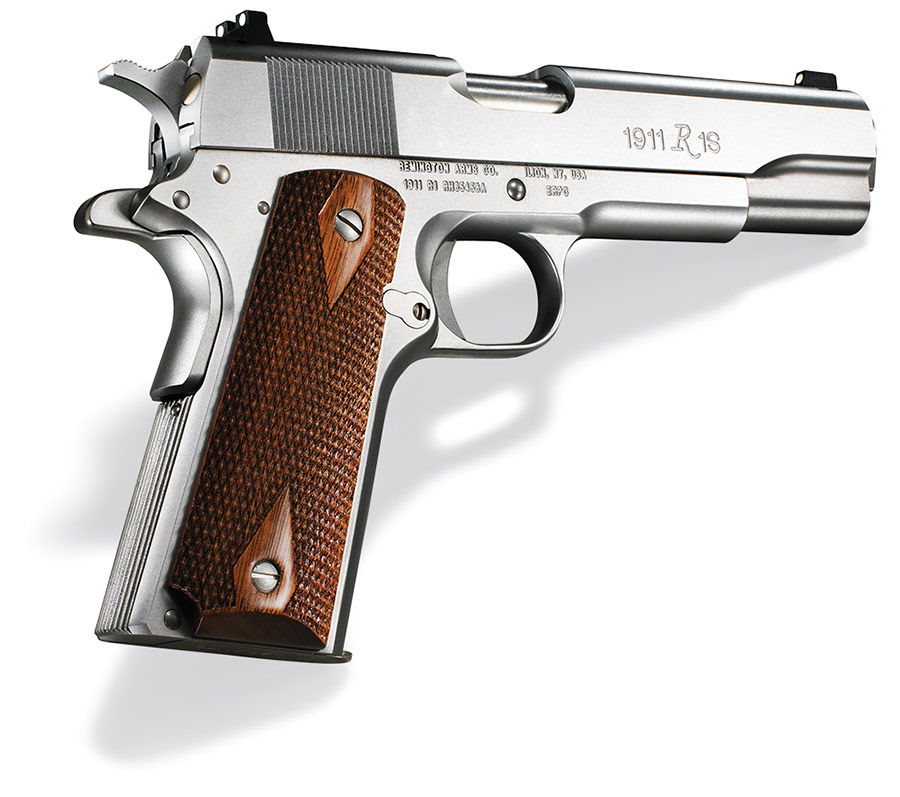
On March 7, 1888, ownership of E. Remington & Sons was sold by the Remington family to new owners, Marcellus Hartley and Partners. The 1890 New Army revolver (shown below) was the last revolver made by Remington under the new ownership, and Remington went back into the business of making rifles for the civilian market, which prior to WW I, was lucrative.
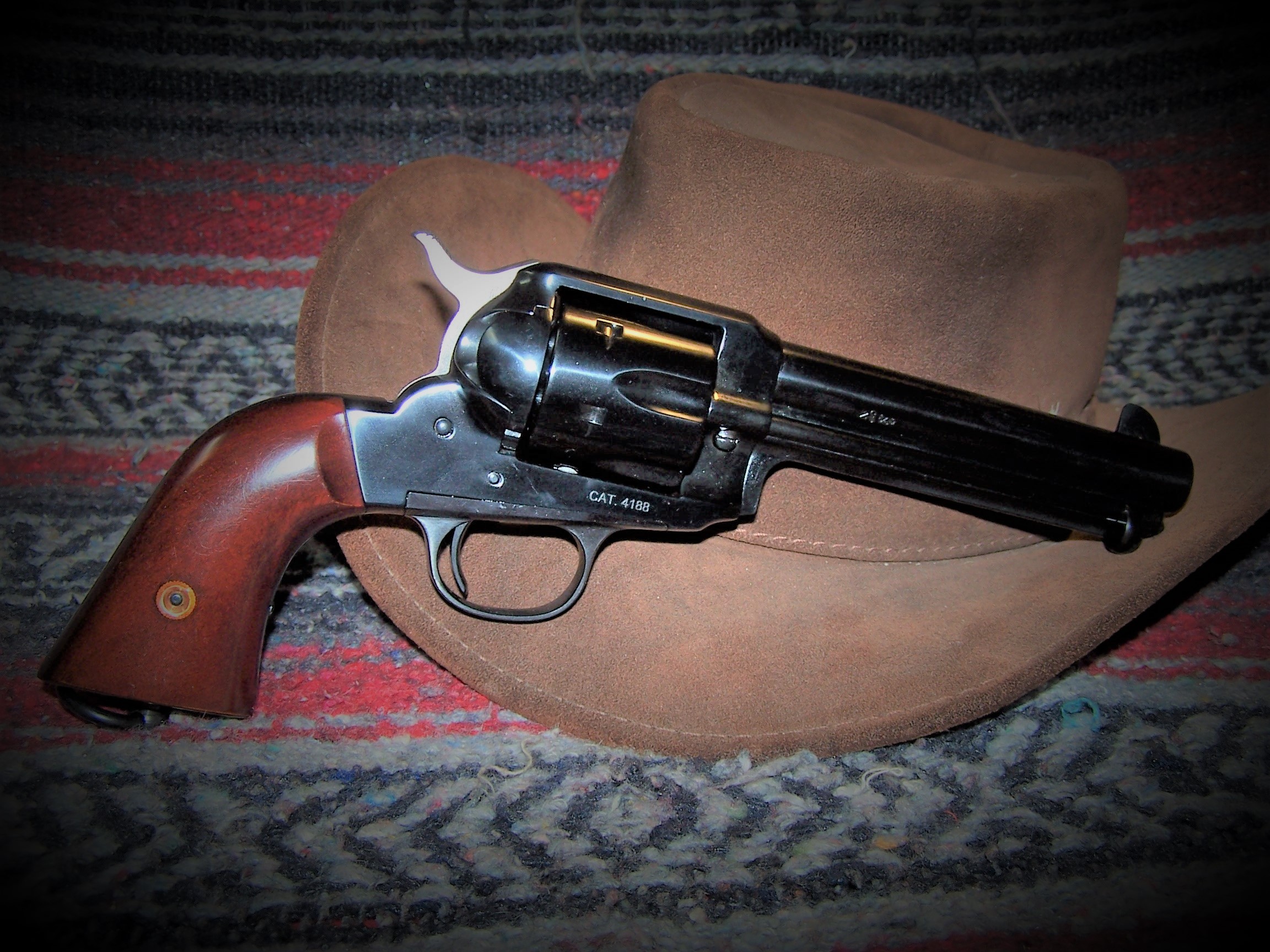
Remington’s history has been up and down. “During the early years of World War 1, Remington produced arms under contract for several Allied powers. Remington produced M1907-15 Berthier rifles for France, Pattern 1914 Enfield rifles for Britain, and Model 1891 Mosin–Nagant rifles for Imperial Russia. As the war intensified, Remington production rose to meet demand.
When the U.S. entered the war, Remington became deeply involved in the war effort. Remington developed and produced the U.S. M1917 Enfield rifle, a simplified version of the British Pattern 1914, and development of the Pedersen device.
In June 2007, a private equity firm, Cerberus Capital Management, acquired Remington Arms for $370 million, including $252 million in assumed debt. Remington was millions of dollars in debt and did not report a profit during the years 2003–2005.[13] It was renamed as the Freedom Group.
In December 2007, Remington Arms acquired rifle-maker Marlin Firearms. As of 2009, ammunition sales continued to remain high during the ongoing United States Ammunition Shortage. Chief Executive Officer Ted Torbeck said that consumer concerns over future restrictions, and taxes on ammunition and firearms by the Obama administrations, were creating a rise in demand.” – Source: https://en.m.wikipedia.org/wiki/Remington_Arms.
During WWI, Remington UMC, which was formed through the merger of Remington Arms and the Union Metallic Cartridge Company, produced over 20,000 Model 1911 pistols for the U.S. military. These 1911 pistols are rare and collectable today. In WWII, Remington Rand, a typewriter manufacturer that was a spinoff of Remington Arms, was the largest producer of 1911 pistols—with nearly 900,000 delivered by the war’s end.
As with Sturm, Ruger and Company, it was satisfying that Remington announced the introduction of a new 1911 pistol on the cusp of the 100th anniversary of its adoption by the U.S. military; the Remington R1, a full-sized semi-automatic, 1911 pistol chambered for the classic and hard-hitting .45 ACP. The Ruger SR1911 was based on a more modern version of the 1911; whereas, the Remington R1 was truer to the original 1911. It was inevitable that an “enhanced” version of the pistol would become available and marketed as the R1 “Enhanced.”
Controversy has always followed the Remington company. Between lawsuits, bankruptcies, and relocation, the company had undergone more changes than most. On February 17, 2014, Remington announced a plan to build a new state-of-the-art plant in Huntsville, Alabama. Remington decided to move two production lines from the Ilion, New York plant because of the fallout from the New York Safe Act, which restricted gun ownership. Huntsville is now building the AR-15 style semi-automatic rifles from Bushmaster, DPMS, the Remington R-15, and 1911 style R-1 pistols in the new plant.
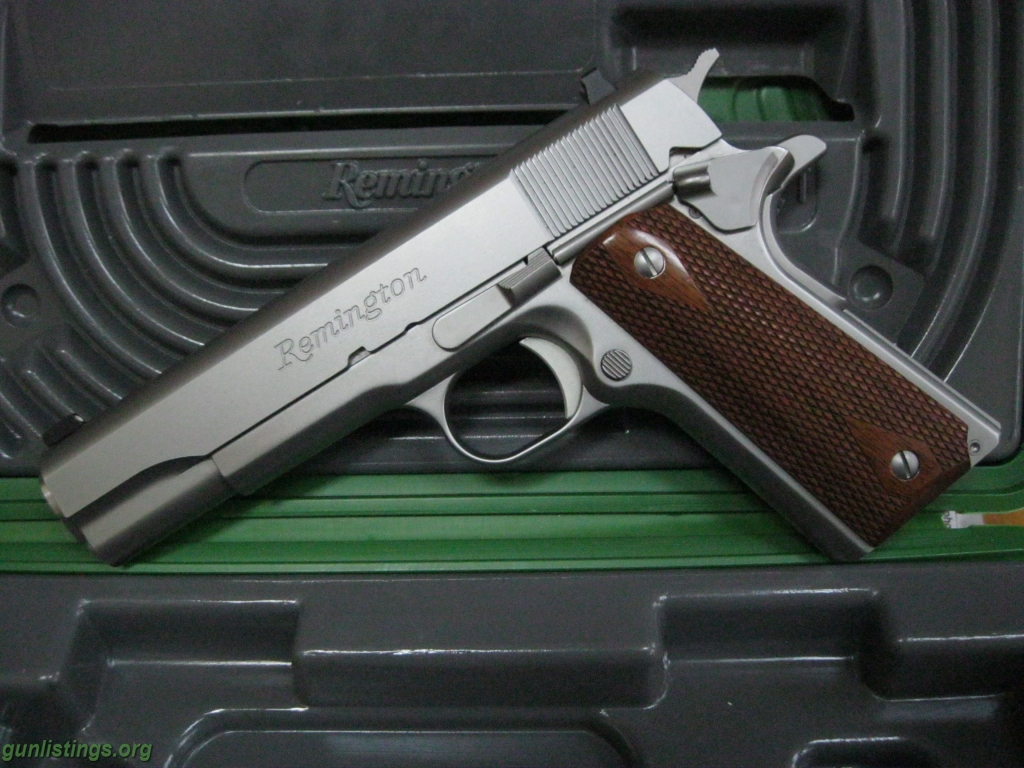
At first, I discounted the Remington 1911 R1 Enhanced. There have been quite a few reports of quality control issues with several its products. The Remington R51, which had its debut in 2014, was not well received. And, in fact, in July 2014 said that production of the R51 had been suspended due to some serious quality and production issues. I shoved the Remington 1911 aside from my 1911 thinking without even a nod in its direction.
Then, I started reading some positive reviews and watching videos on the Remington R1 Enhanced. The original R1 was just another clone of the original G.I issue 1911. The R1 Enhanced is just another clone of a more modern 1911; whereas, it follows the lead of many manufactures who are giving the old war horse a facelift, and it is a much-needed facelift at that. The Remington 1911 R1 Enhanced version sports updates such as that shown below:
- Adjustable rear sight with red fiber-optic front sight.
- Front and rear slide serrations.
- Beavertail grip safety with checkered memory bump.
- Enhanced hammer.
- 3-hole adjustable match trigger.
- Enhanced wide thumb safety.
- Flat checkered mainspring housing (20 LPI).
- Match-grade stainless barrel and bushing.
- Front grip strap serrations.
- Custom grips with thumb groove and ambidextrous cut.
- 8-Round magazine with bumper pads (2).
The Remington R1 Enhanced that now resides in my stable is the stainless-steel model. I know that because the model number on the right side of the side is ENHANCED 1911 R1S; whereas, the S stands for stainless. Without that, I would have never known the I had a stainless-steel pistol. Note that the Remington R1S, herein simply referred to as the R1S, also comes in a “Commander” version. So, allow me to traipse through this review of an excellent 1911 pistol.
Needed Stats
The specifications of the R1S follow.
| Model: | 1911 Enhanced Stainless |
| UPC: | 885293963290 |
| Weight | |
| Unloaded (with magazine) | 2 pounds 8.0 ounces |
| Loaded (8+1 230-grain JHP) | 2 pounds 14.7 ounces |
| Caliber: | .45 AUTO |
| Capacity: | 8 |
| Barrel Length: | 5 inches |
| Overall Width: | 1.4 inches (including thumb safety lever) |
| Overall Length: | 8 ½ inches |
| Overall Height: | 5 ½ inches |
| Trigger Pull (measured): | 5 pounds 13.4 ounces (5-pull average) |
| Sights: | Fiber front, Fixed two-dot rear, drift adjustable only. |
| Finish: | Stainless Steel |
| Grips: | Enhanced Laminate |
| MSRP: | $990.00 |
The visual appeal of the R1S is firmly ensconced in tradition. There is not too much that you can do to make a 1911 pistol ugly, but quite a few people try. Some might say that Remington is over doing it with the heavily-scripted Remington on the left side of the slide. While I understand branding, companies like Remington, Kimber, Ruger, and others need to get over themselves. Rock Island Armory (Armscor) learned about being minimalist with their logo, why can’t these companies? When semi-automatic pistols really became popular, they started to serve as a billboard upon which the manufacturers work their branding magic. Alright, I am through with that rant.
While front cocking serrations may go against tradition, they are not gaudy enough to fly in the face of it. The top of the slide is adorned with the popular ‘fiber’ front sight, which I am not fond of, although this one is well-protected. The sights are dovetailed and drift-adjustable if needed, although they come factory-sighted. The raised rear sight also helps in getting a firmer hold for slide operation and could be used to cycle the action one-handed if pressed against a flat, solid surface such as a wall or the edge of a table. The rear sight is screw adjustable for elevation and drift adjustable for windage.
The entire pistol is of a satin finish, which includes the controls except the black anodized trigger, and I believe that this adds to the Spartan look of the pistol that, to me, is a good look. I do not need flash. I need for this pistol to convey that it is for serious work. The sights and grips are the only contrast to the pistol. Slide to frame fit is excellent; there is absolutely no detectable play between slide and frame.
The ejection port has been flared and lowered for more reliable ejection of spent rounds.
The frame includes many significant tactical upgrades that shooters will appreciate. The rear of the grip features a flat mainspring housing with 20 lines per inch of sharp checkering. The aggressive beavertail grip safety sweeps upward to protect the web of the hand from hammer bite and allow a high handhold. The grip safety features an extended memory bump that ensures the safety is properly deactivated when the pistol is gripped. The memory bump on the grip safety features the same 20-lpi checkering as the mainspring housing.
Characteristically, the 1911 has multiple safeties. In addition to the grip safety, the primary safety is a left-side only thumb safety that locks the sear to the hammer so that the trigger cannot release it. For right-handed shooters, deactivating this frame-mounted safety requires a very instinctive downward motion with the shooting hand’s thumb. The R1S is also built to the “80 Series” meaning that is does have a firing pin block.
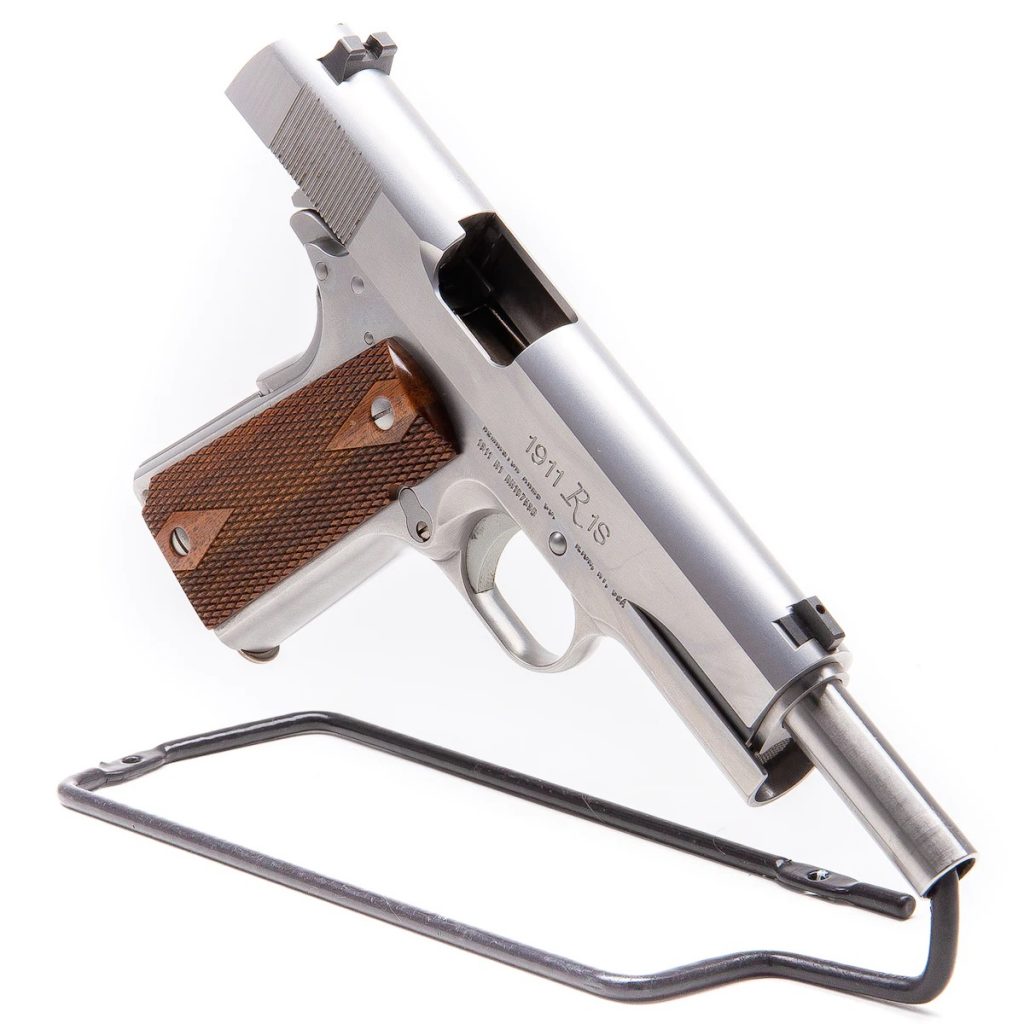
The R1S does not incorporate a full-length guide rod, which will cause purist to feel relieved, as they will not have to change out the guide rod system since the pistol uses the old standard G.I guide rod system. For myself, I am one of those people, but I really do not mind a FLGR – if it adds to the operational value of the pistol. I have 1911 pistols with and without FLGRs and they are all more accurate than I can be.
The Remington R1 Enhanced is built to the “80-Series” Colt platform in that it does incorporate a hammer-block safety, which some don’t like. I carried a “Series-80” Colt Government Model for a while in a past life as a LEO and I had no issues with the trigger, which some claim is heavier and cannot be modified as well as a “70-Series” Colt 1911. Personally, if the trigger does what it is supposed to do, I have no beefs with either series.
The fit and finish is excellent. Some prefer a blued finish on their 1911 pistols, but I prefer a stainless-steel pistol for “duty” use.
The R1S has the now popular extended beavertail and a “Commander” style roiled hammer with enough serrations to allow for cocking the pistol if carried in “Condition 2.” The trigger is a long-reach type with an over-travel adjustment screw.
The grip panels are nicely-checkered laminate material void of any logos. They are pleasing to look at and the checkering is aggressive. Although the grip panels are excellent, I added a more individualized touch (see Upgrades).
Range Time

The R1S, like most stainless-steel 911 pistol are slightly heavier than their carbon steel counterparts, and I like heavy – if it is a balanced heavy. When fully loaded, the R1S has a good heavy, balanced feel to it. For non-1911 folks, this will not mean much. But to us 1911 aficionados, it means plenty.
The range evaluation, while not as extensive as some firearm reviewers perform, tells me a lot about the firearm in a brief period. The ammunition that I use for testing is the same for every firearm of the same caliber. For the Remington R1S, that means Georgia Arms 230-grain FMJ, and a touch of Sig Sauer 230-grain JHP. Testing is first done at seven yards from the bench to determine if the POI is in line with my desired POA. If any “zero” adjustments are needed, I either make them or compensate for them then. Next, I move into some “Mozambique Drills.” I use the remaining FMJ ammunition for these drills and then subject the pistol to the ammunition that I would normally carry for defensive purposes in the same drill. Depending on the outcome, and if I am up to it, I will move on to another drill of mine, the “Hallway Drill.” If the pistol is up to it and I am not, I can hold off until another time. If the pistol is not up to it, well what can I say?
The R1S come with two 8-round magazines with bumper pads. Both magazines worked perfectly. The pistol had no FTFs or FTEs during this range session.
Felt recoil is typical of that found with 230-grain ammunition fired out of a 5” barrel of a full-size, full-weight 1911. The weight of the R1S aids in recoil management, as does a good grip and proper shooting technique. For the newbie, it is hard to describe the felt recoil except to say that it is a push rather than a snap; the 9mm, .40 Smith & Wesson, and 10mm cartridges are snappy. The .45 ACP just wants to push you around, but you can manage it like any other bully of a recoil. Most of the time, I am trying to concentrate on technique, and I do not even notice the recoil anymore, unless I want to be aware of it when testing difference firearms and calibers.
Trigger pull weight is 5 pounds 13.4 ounces average out of five pulls of my Lyman digital trigger pull gauge. There is absolutely no take-up, a very mild feel of grit from the sear as it is released, followed by a decisive release of the hammer. Once this trigger is fully broken in, it will be an excellent trigger; albeit, heavier that I would like. Not that it is needed, but the long, skeletonized, anodized aluminum trigger incorporates an over-travel screw.
The left-side only thumb safety is wide and easily found and just as easily activated in both directions. The magazine release button is extended and, of course, left side only as JMB (John Moses Browning, January 23, 1855 – November 26, 1926 ) intended it to be. All controls are easily accessible.
Concealed Carry
As has been said in the past and will be repeated in the future, concealed carry of a full-blown 1911 is not any different than attempting to conceal any other firearm; it takes planning and the right combination of support equipment (holster, belt, clothing, etc.) to pull it off successfully. The larger the firearm you are trying to hide, the more work goes into doing it.
For some, carrying a full-size 1911 is just out of the question. For others who can, there are many products and resources for doing just that.
What is shown below is the R1S being housed in an Alien Gear Cloak Tuck 3.5 IWB Holster (Inside the Waistband), the R1S housed in a Falco A112 Hawk IWB Holster, the R1S housed in IWB holster by Savoy Leather, and the R1S housed in a “Cumberland” holster by Simply Rugged Holsters. Obviously, there are other holster and carrier systems that will serve with distinction as concealed carry carriers. Personally, I am in favor of all leather holsters, which are more friendly to a firearm’s finish than Kydex or “Kybrid” holsters; holsters that are made of Kydex and leather.

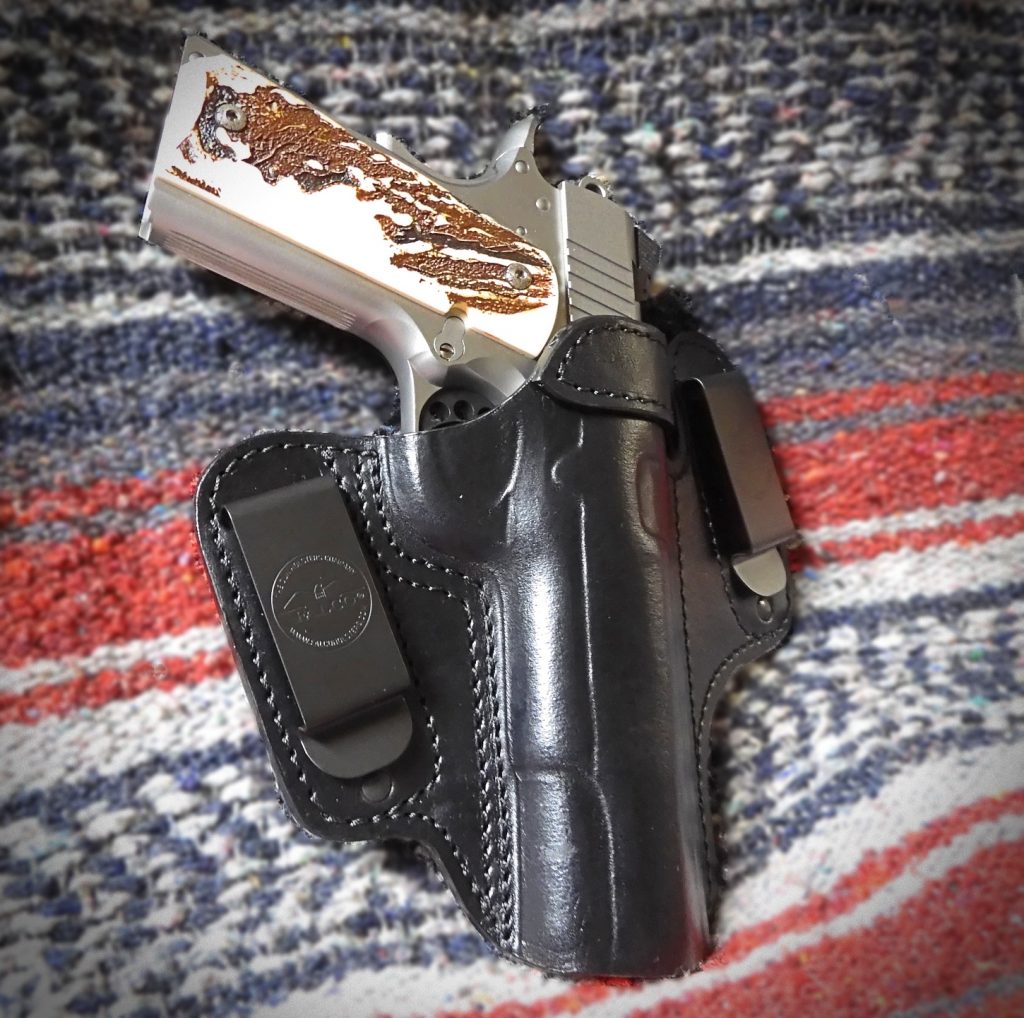
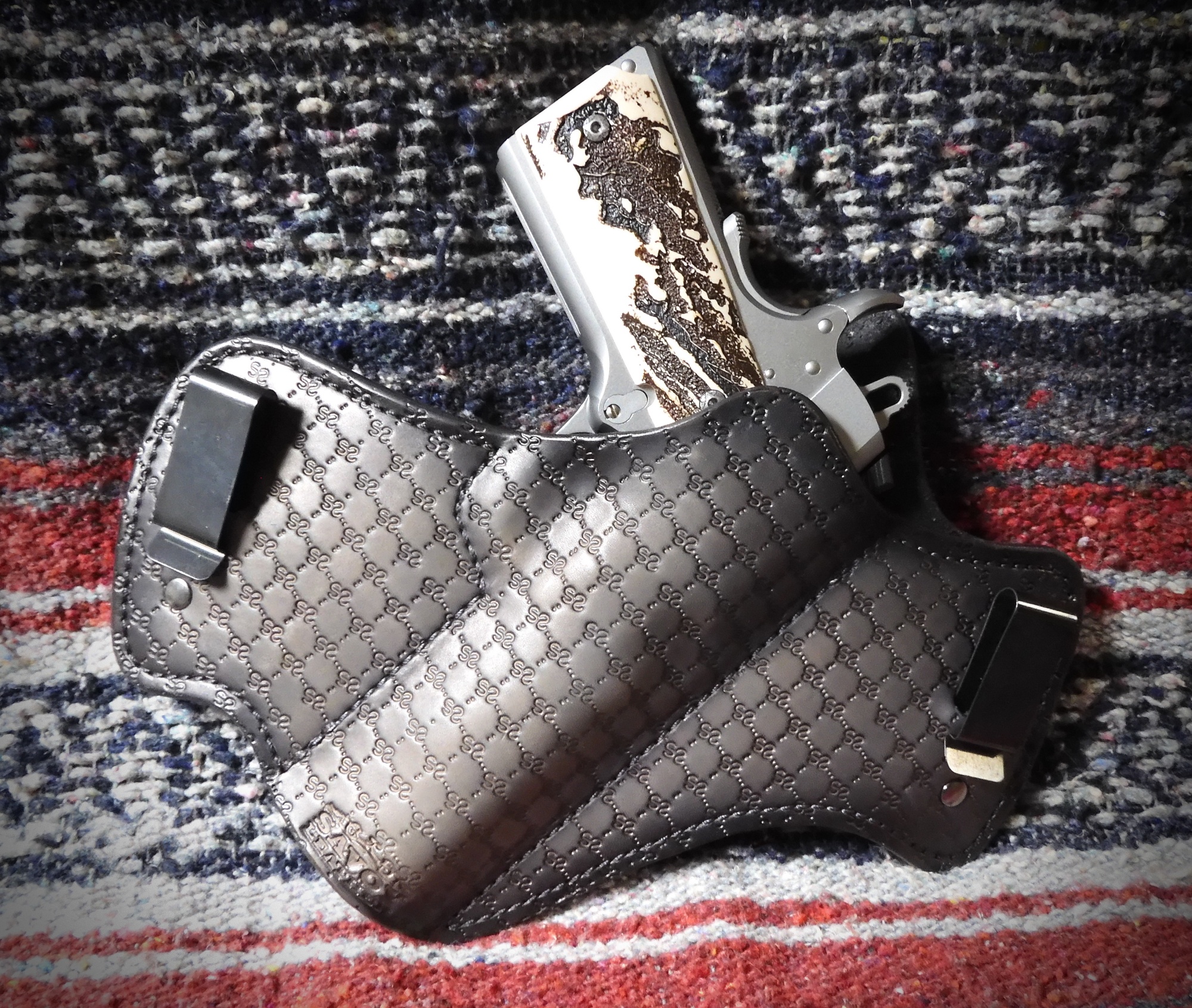
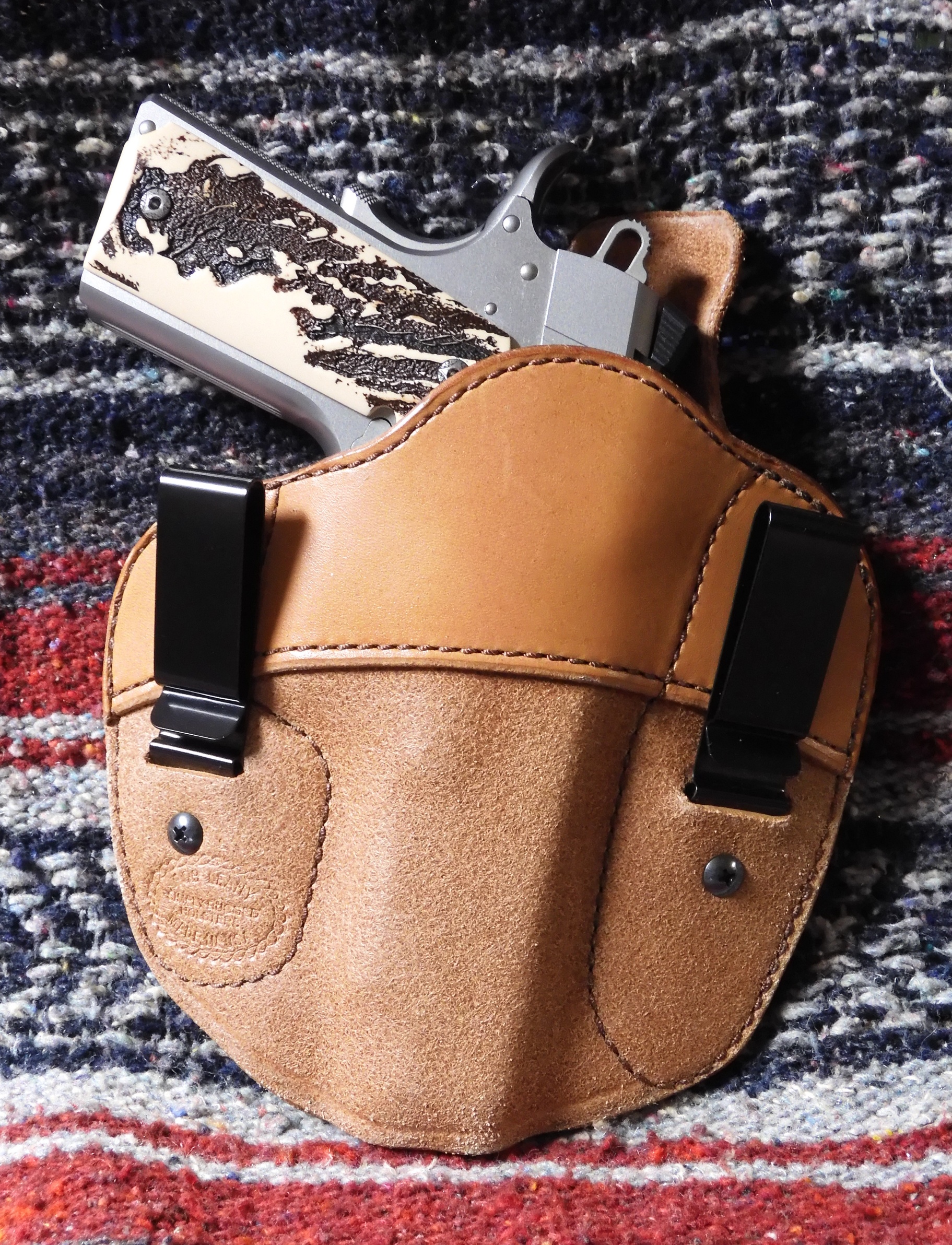
My favorite (at least for now) is the Falco A112 Hawk. I have one in mahogany and one in black.
While I do like the Versacarry, and which carries like you are not carrying a holster at all, the inability to insert the pistol into the holster while worn is a distraction.
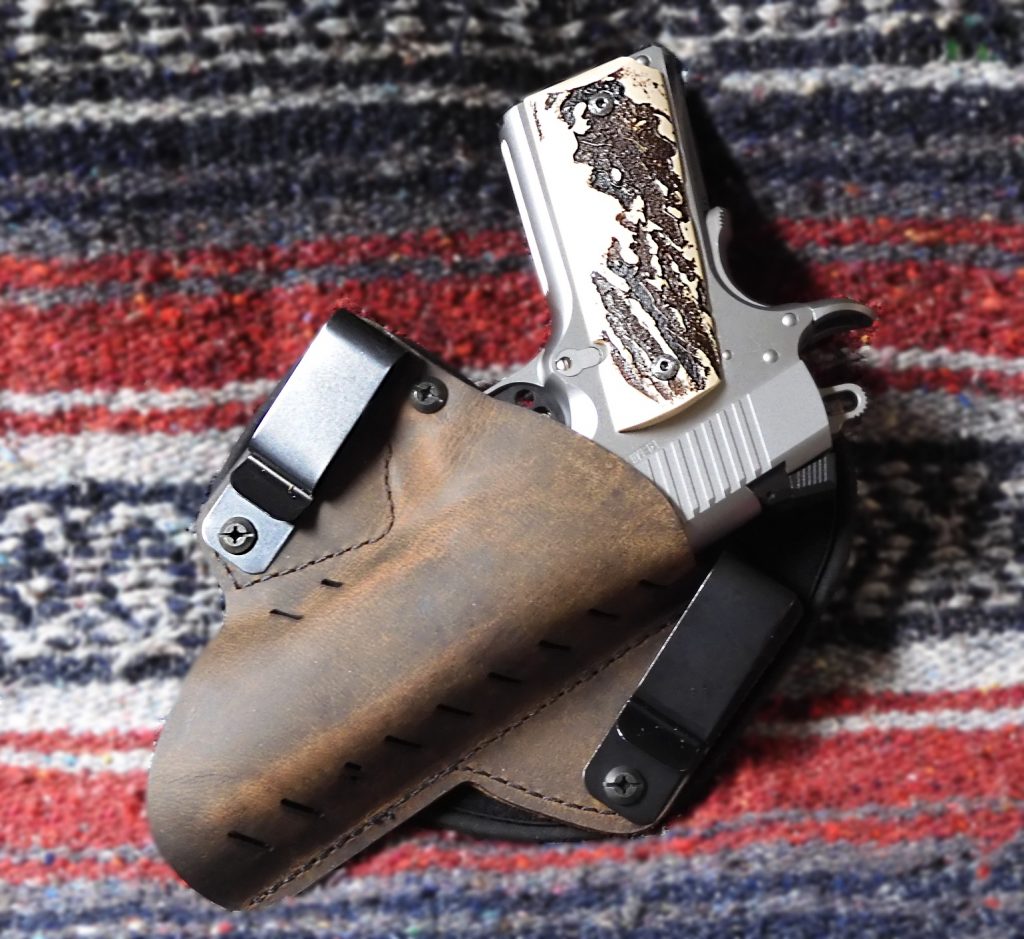
Upgrades
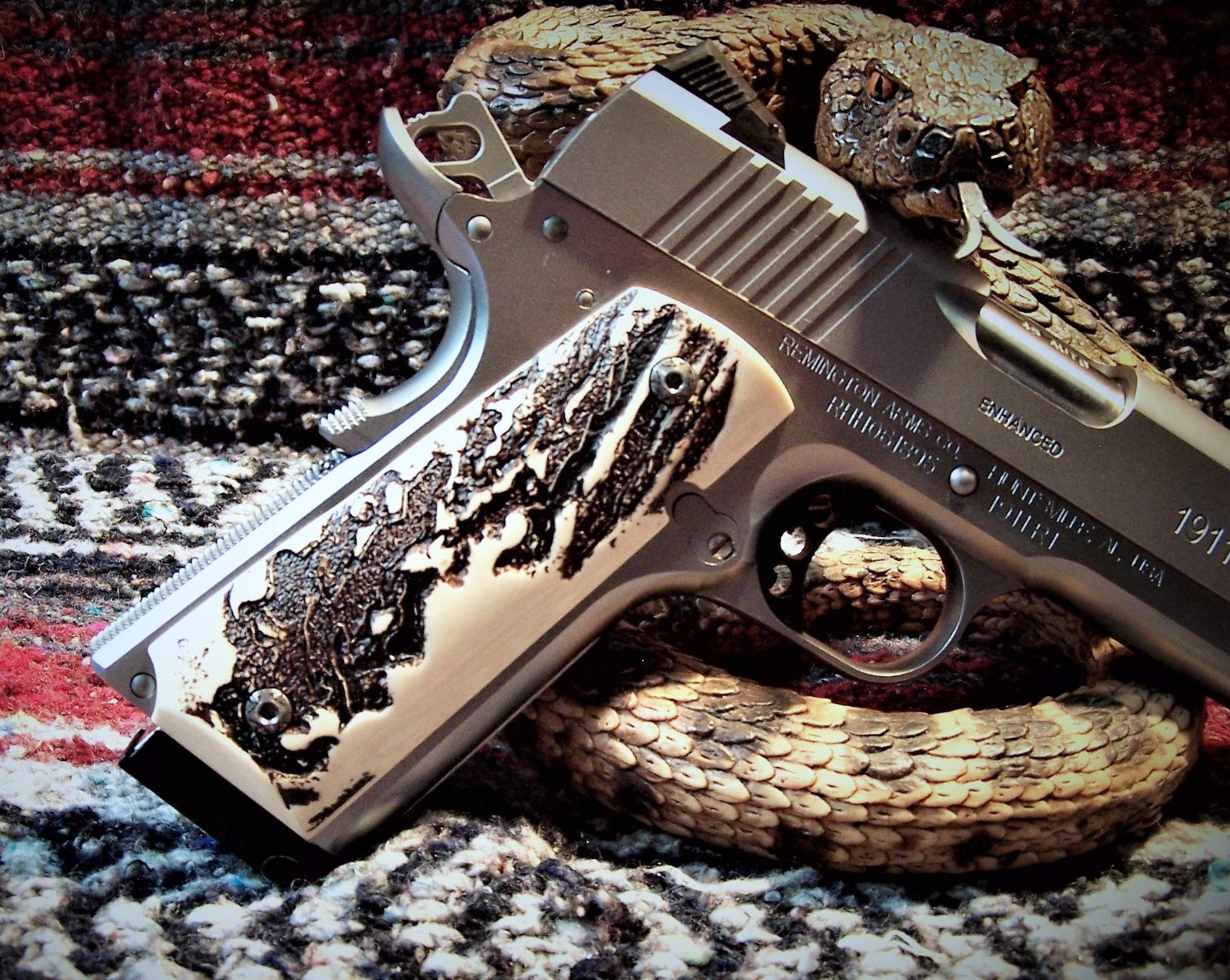
The provided grip panels are fully checkered, pleasing to look at, aggressive to the hand, and were exchanged with the 1911 Govt. Classic Panel Imitation Stag grip panels shown below from the Altamont Company. This pistol needed some class, and I do believe that these faux stag grips adds just that. Note that the grip panel screws were also exchanged with decent grip panel screws in lieu of slotted screws. Who uses slotted screws on a 1911 anymore? Well, Remington did. What were they thinking? This is a modern version of the 1911, and you just do not use slotted grip panel screws unless it is a reproduction of the original 1911! That is in my humble opinion.

Update August 25, 2021
Although the 1911 Govt. Classic Panel Imitation Stag grip panels from the Altamont Company looked great on the Remington R1S, I lusted for a more ‘aged’ look in the grip panels.
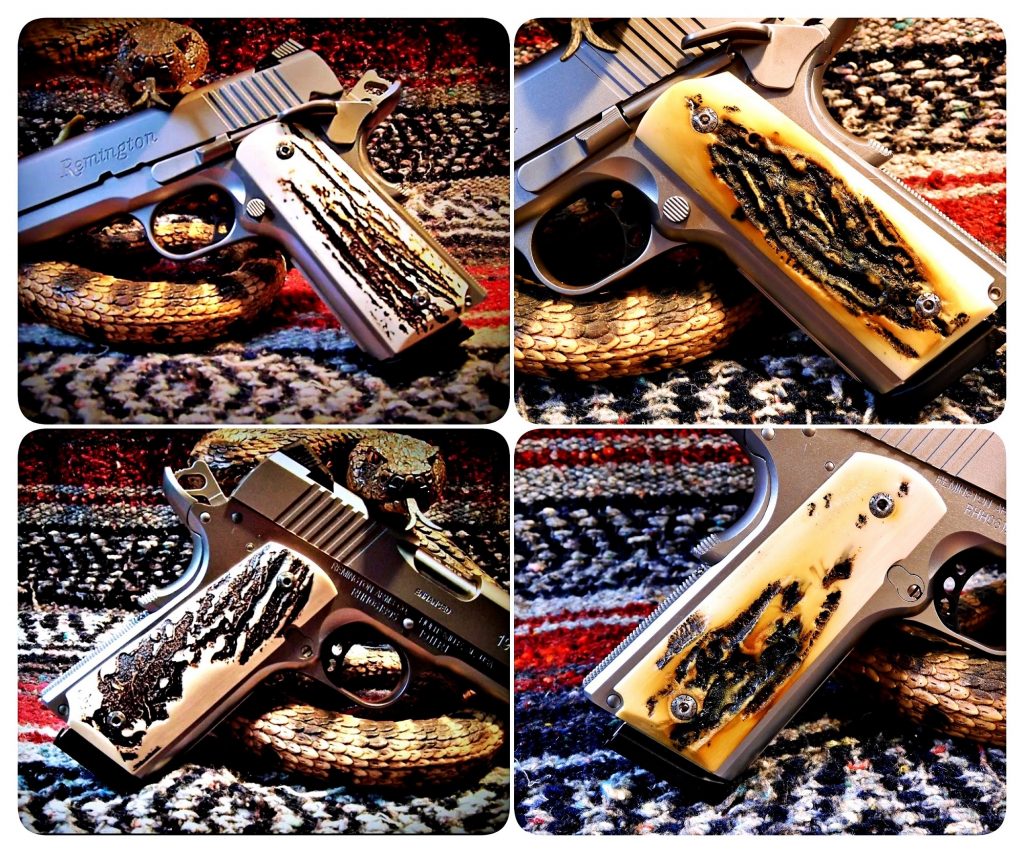
The Altamont grip panels were exchanged with a set of DURAGRIPS – Fullsize 1911 Grips for Colt Kimber Sig STI – Faux STAG.
I like the yellowed ‘aged’ look and deeper ‘texturing’ of the new grip panels over the Altamont grip panels (which will eventually find their way onto another 1911). The left side texturing is more than adequate for the fingers to grip and the overall feel of the grip is very comfortable.
The grip screws, also from Altamont, were retained as I like the grip screw pattern over plain stainless-steel grip screws.
The final mod will be to replace the flat mainspring housing with a checkered, arched mainspring housing. I am becoming ossified in my choice of arched (M1911A1) mainspring housings simply because the 1911 pistol fits my hand better than those with flat mainspring housings.
Bringing it Home!
As I mentioned at the beginning of this article, I had not even considered the Remington R1 Enhanced at first, and I have to say that I should have known better. You must read a book before you can judge it, and I failed to do that until I took the time.
You can tell if a firearm has quality the moment you pick it up. The R1S is a quality handgun. It is solidly built and is an excellent example of a modern 1911 pistol.
There are six examples of the R1 Enhanced; The R1 Stainless Enhanced Commander, R1 Enhanced Commander, R1 Enhanced CT (Crimson Trace), R1 Enhanced Threaded Barrel, R1 Stainless Enhanced, and R1 Enhanced. The “enhanced” is also available in 9mm.
You can view them all from Remington’s catalog site.
Resources
There is not too much information available for the Remington R1 Enhanced, but I share below what I have found. I’ll try to update this list as I find more information.
- Remington 1911 R1 Enhanced: https://www.youtube.com/watch?v=1_DpHE0h9zk
- Remington: https://www.remington.com/
![]()

